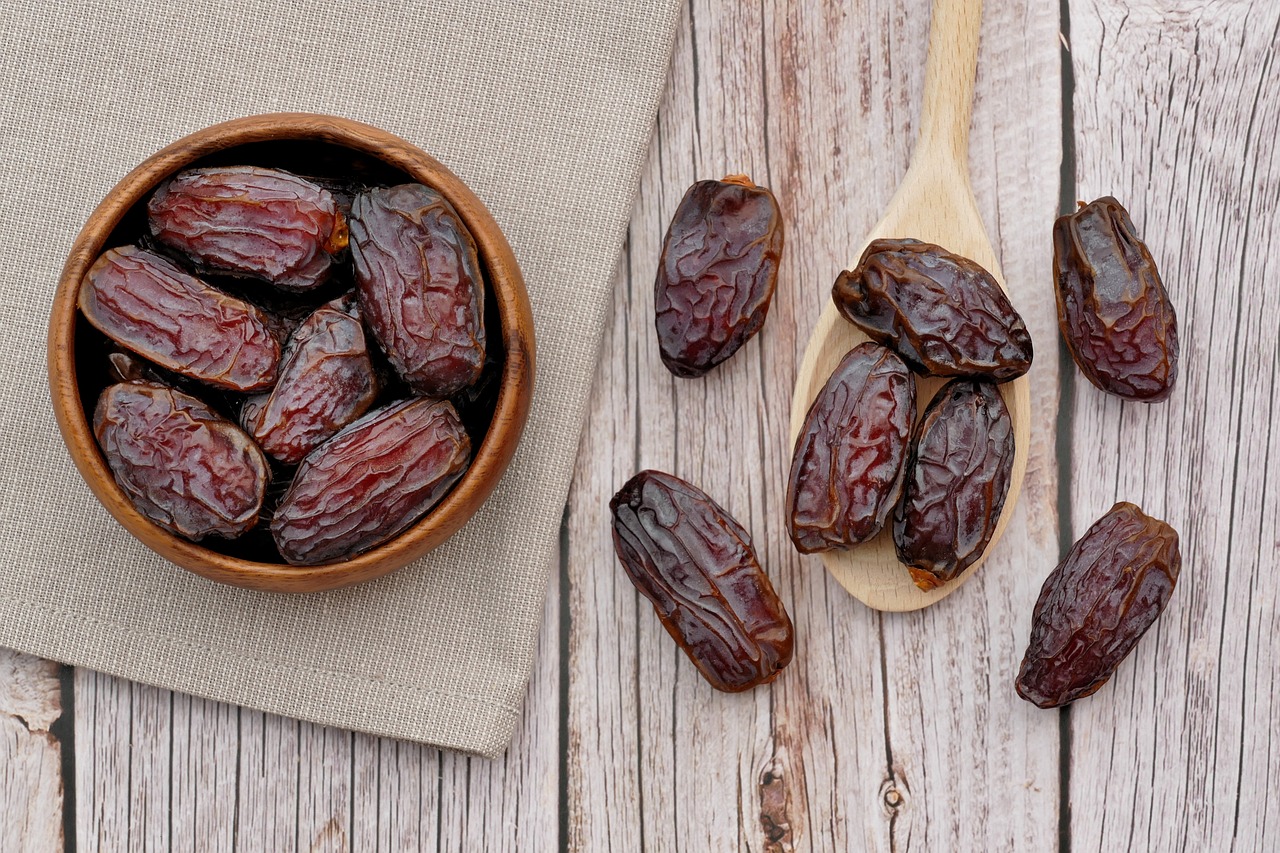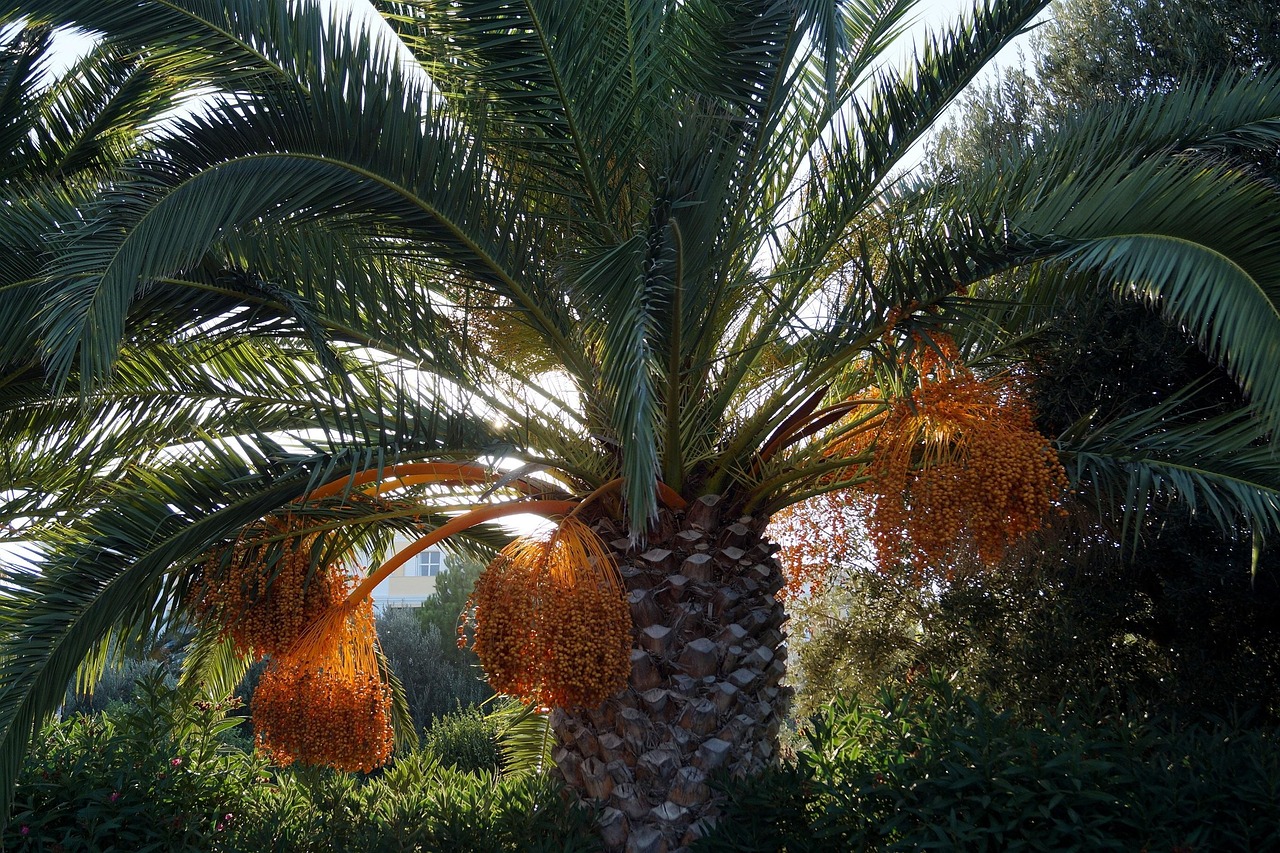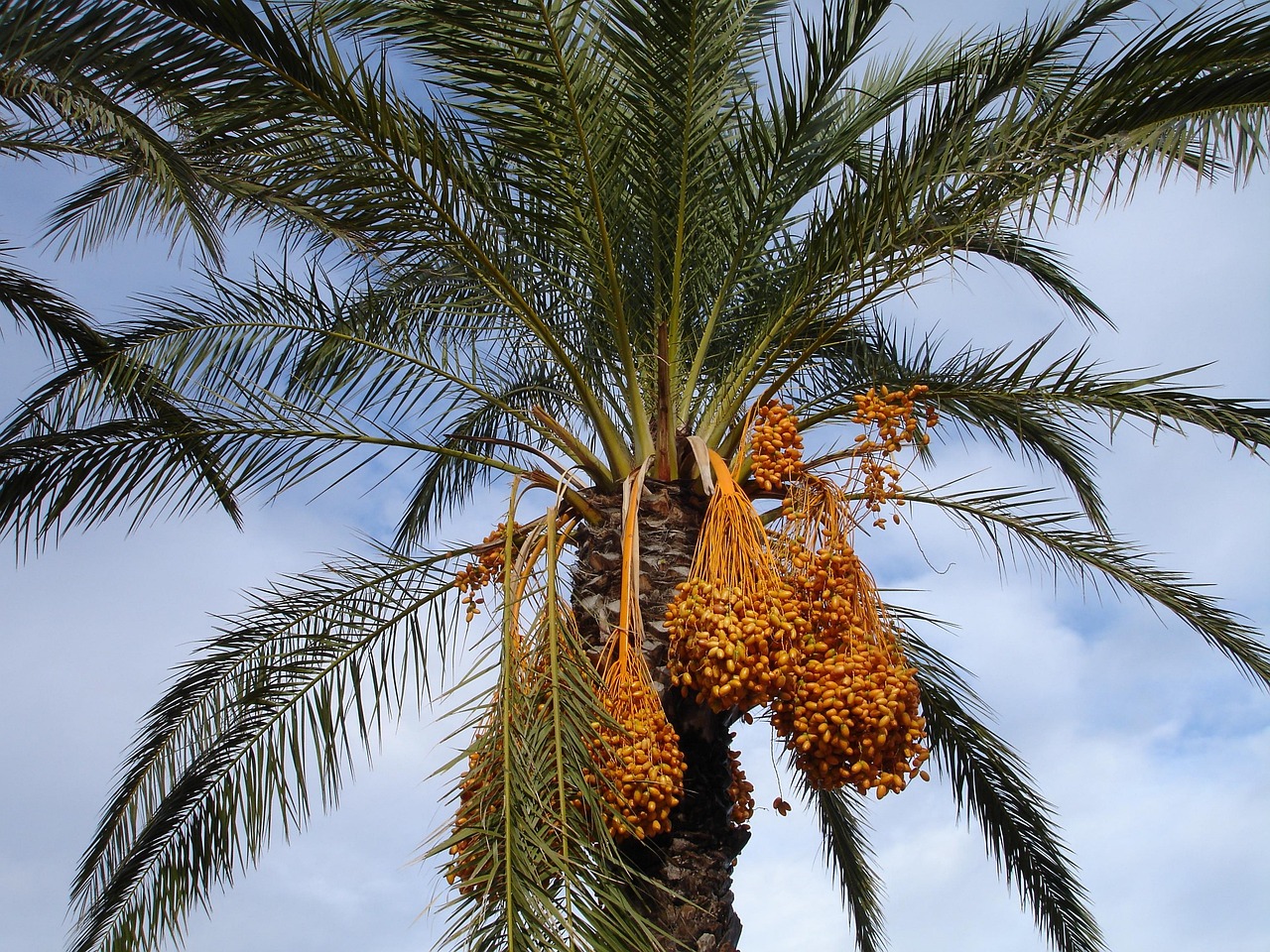Date palm pruning is essential for tourism landscaping as it enhances the aesthetic appeal of landscapes, promotes healthy growth, and ensures visitor safety. Properly pruned date palms create inviting spaces that reflect the natural beauty of the environment.
Date palms are among the most iconic trees in many regions. They are often associated with arid landscapes and cultural significance. These trees not only provide shade but also bear fruit that is valued for its nutritional benefits. In tourism, date palms play a vital role in creating attractive environments that draw visitors to various attractions.

Pruning is a critical aspect of maintaining date palms. It involves removing dead or dying fronds and controlling the shape of the tree. This process encourages healthy growth and prevents diseases that can spread through decaying leaves. Additionally, proper pruning techniques can enhance the overall appearance of the palm, making it a focal point in landscaping designs.
The Importance of Date Palm Pruning
Pruning date palms serves multiple purposes. Understanding these benefits can help tourism operators and landscapers make informed decisions about their landscaping strategies. Below are some key reasons why pruning is important:
- Aesthetic Appeal: Well-maintained date palms enhance the visual landscape, creating a more inviting atmosphere for tourists.
- Healthier Growth: Regular pruning removes unhealthy fronds, allowing the tree to focus its energy on new growth.
- Safety: Dead fronds can fall, posing a risk to visitors. Pruning reduces this hazard.
- Airflow and Sunlight: Thinning out fronds improves airflow and sunlight penetration, which benefits the overall health of the tree.
- Fruit Quality: Proper pruning can improve the quality and quantity of fruit production.
Landscapers should consider the timing and techniques of pruning. Ideal times for pruning date palms typically include late winter or early spring when the risk of disease is lower, and before the onset of new growth. Understanding local climate conditions is essential for determining the best pruning schedule.

Pruning Techniques
There are several techniques that landscapers can use when pruning date palms. Each method has specific benefits and is suited for different situations. Here are some common techniques:
- Cleaning: This involves removing dead or dying fronds from the palm. It is crucial to clear away material that could attract pests or diseases.
- Thinning: Thinning reduces the number of fronds to improve light penetration and airflow. This encourages new growth and helps maintain the palm’s shape.
- Skirting: Skirting is the practice of removing lower fronds to create a clean trunk appearance. This technique is often used in tourist areas to enhance visual appeal.
- Shaping: Shaping involves trimming fronds to maintain a desired form. This technique is particularly useful for ornamental purposes.
The tools used for pruning are equally important. High-quality, sharp tools reduce the risk of damaging the palm and help make clean cuts. Common tools include:
- Hand Pruners: Ideal for small fronds and detailed work.
- Loppers: Useful for cutting thicker branches.
- Saws: Necessary for removing larger fronds or branches.
- Safety Gear: Gloves, goggles, and hard hats should be worn to protect against injuries during pruning.
Challenges in Date Palm Pruning
While pruning is beneficial, there are challenges that landscapers may face. Recognizing these challenges can help in planning effective maintenance strategies. Some common issues include:

- Pest Infestations: Pests such as scale insects can damage palms. Regular inspection during pruning can help identify and address these problems.
- Disease Management: Fungal infections can arise from improperly cut fronds. Using sterilized tools minimizes this risk.
- Cultural Practices: Different regions may have varying cultural practices regarding palm maintenance, which can influence local expectations.
Date palm pruning is an essential practice in tourism landscaping. By understanding its importance, techniques, and challenges, operators can create beautiful, safe environments that attract visitors and enhance their experiences in natural spaces.
Seasonal Considerations for Pruning Date Palms
Understanding the seasons is crucial for effective date palm pruning. Each season presents unique challenges and opportunities for growers and landscapers. The timing of pruning can significantly affect the health and aesthetics of the palms. Here, we explore the seasonal considerations that should guide pruning practices.
Spring Pruning
Spring is considered one of the best times to prune date palms. During this season, trees begin to actively grow, making it easier to identify dead or damaged fronds. The following points highlight the advantages of spring pruning:

- Improved Visibility: As new growth emerges, it becomes easier to see which fronds are unhealthy.
- Promotes Fresh Growth: Pruning in early spring encourages vigorous new growth, enhancing the overall appearance of the tree.
- Prevention of Pest Infestations: By removing dead fronds in spring, landscapers reduce the risk of pests settling in decaying material.
Summer Pruning
While summer can be a challenging time for pruning due to heat stress on both workers and plants, it can still be beneficial under certain conditions. Here are some key factors related to summer pruning:
- Maintenance Focus: Summer pruning can focus on minor maintenance tasks, such as removing small dead fronds or any growth that is obstructing pathways.
- Monitoring Pests: Summer is an active time for pests. Regular inspections during this period can help identify issues early.
- Avoiding Stress: It’s essential to avoid heavy pruning in summer to prevent stressing the tree during peak heat.
Fall Pruning
Fall is another critical period for date palm care. This time is often used for preparatory work before winter. The benefits of fall pruning include:
- Preparation for Dormancy: Pruning before dormancy helps the tree conserve energy and prepares it for the colder months.
- Enhanced Aesthetics: Keeping palms tidy in fall enhances visual appeal during seasons when tourism may peak.
- Pest Control: Removing unhealthy fronds in fall can eliminate potential pest habitats before winter arrives.
Winter Pruning
Winter is generally not recommended for extensive pruning due to the risk of cold damage. However, light maintenance can still occur. Important considerations include:
- Minimal Intervention: Only minor pruning should take place to avoid stressing the tree during its dormant phase.
- Tool Maintenance: Winter provides an excellent opportunity for landscapers to sharpen and sterilize tools in preparation for the spring season.
- Inspection Period: Winter is a good time to inspect palms for signs of disease or damage without making extensive cuts.
Techniques for Effective Pruning
Implementing proper techniques is essential for successful date palm pruning. Techniques not only influence the aesthetic outcome but also impact the health of the trees. Here are some recommended techniques:
Crown Cleaning
Crown cleaning involves removing any dead, dying, or damaged fronds from the top of the palm. This technique helps maintain an attractive appearance and prevents potential hazards from falling debris. Key aspects include:
- Safety First: Always wear protective gear when working at heights.
- Use Sharp Tools: Employ sharp tools to make clean cuts and minimize damage to healthy tissue.
- Avoid Over-Pruning: Limit the number of fronds removed to maintain natural shape and health.
Crown Lifting
Crown lifting is the practice of removing lower fronds to raise the height of the palm’s canopy. This technique is particularly useful in landscaped areas where visibility is necessary. Benefits include:
- Accessibility: Increased height allows visitors easier access beneath the palm without obstruction.
- Aesthetic Appeal: Enhances the visual height and structure of the landscape design.
- Safety Improvements: Reduces risks associated with low-hanging fronds that may pose hazards to visitors.
Crown Thinning
Crown thinning involves selectively removing fronds to improve light penetration and air circulation. This technique is beneficial for maintaining overall palm health. Important points include:
- Selective Removal: Focus on removing fronds that are crowded or crossing each other.
- Aim for Balance: Maintain a balanced crown structure by evenly spacing remaining fronds.
- Pest Prevention: Improved airflow reduces humidity levels within the crown, which helps prevent fungal diseases.
The application of these techniques ensures that date palms remain healthy while enhancing their contribution to tourism landscaping. Proper timing and execution can create a striking visual impact while promoting sustainable growth. Understanding these aspects is essential for landscapers aiming to achieve beautiful and thriving landscapes featuring date palms.
Tools and Equipment for Pruning Date Palms
Choosing the right tools and equipment is essential for effective date palm pruning. The quality and type of tools can significantly impact the efficiency of the pruning process and the health of the palms. Below are some commonly used tools and their specific purposes.
Pruning Shears
Hand-held pruning shears are vital for cutting smaller fronds and branches. They come in various sizes and designs, making them suitable for detailed work. When selecting pruning shears, consider the following:
- Size and Weight: Choose lightweight options for extended use without fatigue.
- Blade Quality: Look for high-carbon steel blades that stay sharp longer and resist rust.
- Ergonomic Design: Handles that fit comfortably in your hand can boost efficiency during pruning sessions.
Loppers
Loppers are designed for cutting thicker branches that are too large for standard pruning shears. These tools typically have long handles for increased leverage. Key features include:
- Cutting Capacity: Ensure loppers can handle branches up to 1.5 inches in diameter.
- Bypass vs. Anvil: Bypass loppers provide cleaner cuts than anvil loppers, which can crush stems.
- Adjustable Length: Some loppers offer adjustable handles, allowing for greater reach without sacrificing cutting power.
Saws
For larger fronds or branches, a pruning saw is necessary. These saws are designed specifically for cutting through thick wood. Considerations include:
- Blade Type: Choose between folding saws for portability or straight saws for stability.
- Teeth Count: More teeth result in smoother cuts, while fewer teeth allow for quicker cutting.
- Durability: Look for rust-resistant materials to ensure longevity.
Safety Gear
Safety should always be a priority while pruning date palms. Proper safety gear protects against potential accidents. Essential safety equipment includes:
- Gloves: Thick gloves protect hands from cuts and scrapes.
- Eye Protection: Safety goggles prevent debris from entering the eyes during pruning.
- Hard Hats: Wearing a hard hat is crucial when working under tall palms to protect against falling fronds.
- Non-Slip Shoes: Proper footwear helps maintain balance on ladders or uneven ground.
The Role of Fertilization in Palm Health
Fertilization plays a significant role in maintaining healthy date palms, especially after pruning. When fronds are removed, the tree may need additional nutrients to support new growth. Understanding the best practices for fertilization can enhance palm health and appearance.
Nutrient Requirements
Date palms require various nutrients to thrive. The primary nutrients needed include nitrogen, phosphorus, and potassium, often referred to as NPK. Each nutrient serves specific functions:
- Nitrogen: Essential for leaf growth and overall plant vigor.
- Phosphorus: Crucial for root development and flowering.
- Potassium: Helps with water regulation and disease resistance.
Fertilization Techniques
The method of fertilization can impact the efficiency of nutrient uptake. Common techniques include:
- Granular Fertilizers: These can be spread around the base of the palm, allowing nutrients to be absorbed over time.
- Liquid Fertilizers: Quick-acting and can be applied during watering to promote immediate uptake.
- Foliar Feeding: Spraying nutrients directly onto leaves ensures rapid absorption but should be used alongside soil fertilization.
Timing of Fertilization
The timing of fertilization is crucial for maximum effectiveness. Ideal times include:
- Post-Pruning: Fertilizing after pruning helps support new growth.
- Spring Awakening: Applying fertilizer in early spring promotes vigor as the growing season begins.
- Avoiding Dormancy: Refrain from fertilizing during the winter months when the palm is dormant.
Pest Management Strategies
Pests can pose significant challenges to the health of date palms, particularly following pruning when trees may be more vulnerable. Implementing effective pest management strategies is essential for maintaining healthy palms.
Pest Identification
The first step in pest management is identifying common pests that affect date palms. Some notable pests include:
- Scale Insects: Often found on the trunk and fronds, they suck sap from the tree, weakening it over time.
- Aphids: Small insects that can cause leaf curling and stunted growth by feeding on sap.
- Caterpillars: Larvae that can damage fronds by feeding on them during their growth stage.
Pest Control Methods
A variety of control methods can be used to manage pests effectively:
- Cultural Controls: Practices such as proper irrigation, sanitation, and maintaining healthy trees can deter pest infestations.
- Biological Controls: Introducing natural predators, like ladybugs, can help keep pest populations in check.
- Chemical Controls: When necessary, targeted insecticides can be applied, but they should be used as a last resort to minimize harm to beneficial insects.
The integration of effective tools, fertilization techniques, and pest management strategies will contribute significantly to the health and vitality of date palms in tourism landscapes. By following these practices, landscapers can ensure that their date palms remain attractive and thriving throughout the seasons.
Long-Term Maintenance Strategies for Date Palms
Maintaining the health and aesthetics of date palms extends beyond pruning and immediate care. Long-term strategies are necessary to ensure the sustainability of these trees in tourism landscapes. Here, we discuss some essential long-term maintenance practices.
Regular Monitoring
Continuous observation of date palms is crucial for early detection of issues. Regular monitoring can involve:
- Visual Inspections: Checking for signs of pests, diseases, or nutrient deficiencies on a routine basis.
- Soil Testing: Conducting soil tests periodically to assess nutrient levels and pH balance, ensuring optimal growing conditions.
- Growth Assessment: Measuring growth rates and overall health to identify any drastic changes that may require intervention.
Water Management
Effective water management is vital for the long-term success of date palms. Proper irrigation techniques can include:
- Drip Irrigation: This method delivers water directly to the root zone, minimizing waste and enhancing water efficiency.
- Scheduling Irrigation: Watering should be based on season and rainfall patterns, adjusting frequency to prevent over- or under-watering.
- Drainage Solutions: Ensuring proper drainage helps prevent root rot and other water-related issues.
Soil Health Improvement
Healthy soil is fundamental to the growth of date palms. To maintain soil health, consider these practices:
- Organic Matter Addition: Incorporating compost or organic mulches enriches soil structure and nutrient availability.
- Cover Crops: Planting cover crops can enhance soil fertility, reduce erosion, and suppress weeds.
- Crop Rotation: Rotating different plants in the vicinity can prevent nutrient depletion and reduce pest populations.
Community Engagement and Education
For tourism operators, engaging the local community and educating visitors about date palms can enhance the overall experience. Informative strategies include:
- Guided Tours: Offering guided tours that educate visitors about the significance, care, and uses of date palms.
- Workshops: Hosting workshops on pruning techniques and palm care can foster community involvement and interest.
- Interactive Displays: Creating displays that provide information about the lifecycle of date palms and their role in local culture.
Sustainability Practices
Sustainable practices are increasingly important in landscaping. For date palm care, consider implementing the following:
- Integrated Pest Management (IPM): Utilizing a combination of biological, cultural, and chemical practices to manage pests sustainably.
- Water Conservation Techniques: Implementing rainwater harvesting systems to utilize natural resources efficiently.
- Native Plant Integration: Incorporating local flora into landscaping designs can create a more sustainable ecosystem that supports biodiversity.
Final Thoughts
Date palm pruning for tourism landscaping is a multifaceted process that requires careful consideration. By focusing on proper techniques, seasonal timing, effective tools, and long-term maintenance strategies, landscapers can ensure these iconic trees thrive. The integration of community engagement and sustainability practices further enriches the experience for visitors while promoting environmental stewardship.
Ultimately, healthy date palms not only enhance the beauty of tourist destinations but also represent cultural heritage and ecological balance. With diligent care and innovative approaches, the benefits of date palms will continue to be felt in landscapes around the world, providing shade, fruit, and aesthetic pleasure for generations to come.
The commitment to ongoing education and adaptation to best practices will help ensure that date palms remain an integral part of tourism landscapes. As we engage with these remarkable trees, we contribute to their legacy while offering visitors unforgettable experiences.
